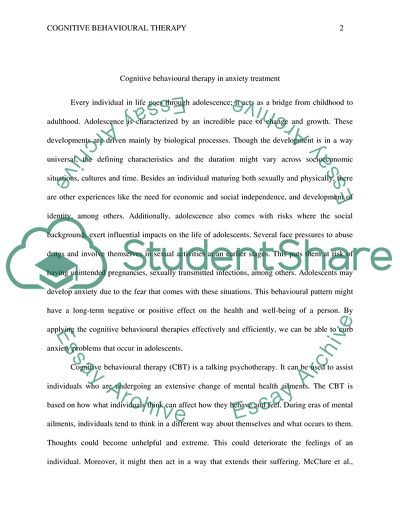Cite this document
(How can Cognitive Behavioural Therapy (CBT) be used to help an Essay, n.d.)
How can Cognitive Behavioural Therapy (CBT) be used to help an Essay. https://studentshare.org/psychology/1865116-how-can-cognitive-behavioural-therapy-cbt-be-used-to-help-an-adolescent-with-anxiety
How can Cognitive Behavioural Therapy (CBT) be used to help an Essay. https://studentshare.org/psychology/1865116-how-can-cognitive-behavioural-therapy-cbt-be-used-to-help-an-adolescent-with-anxiety
(How Can Cognitive Behavioural Therapy (CBT) Be Used to Help an Essay)
How Can Cognitive Behavioural Therapy (CBT) Be Used to Help an Essay. https://studentshare.org/psychology/1865116-how-can-cognitive-behavioural-therapy-cbt-be-used-to-help-an-adolescent-with-anxiety.
How Can Cognitive Behavioural Therapy (CBT) Be Used to Help an Essay. https://studentshare.org/psychology/1865116-how-can-cognitive-behavioural-therapy-cbt-be-used-to-help-an-adolescent-with-anxiety.
“How Can Cognitive Behavioural Therapy (CBT) Be Used to Help an Essay”. https://studentshare.org/psychology/1865116-how-can-cognitive-behavioural-therapy-cbt-be-used-to-help-an-adolescent-with-anxiety.


